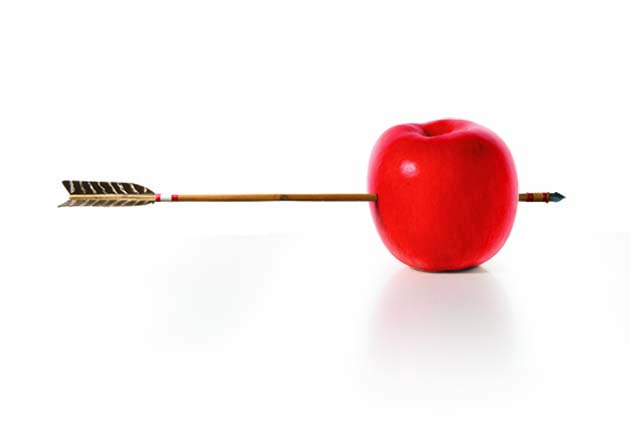Want to Beat Apple?
You'll Need to Jump 3 Hurdles

Source:cw
Although smartphones operating on the Android system have surpassed iPhone in terms of quantity, Apple remains the undisputed profit king. Those seeking to surpass Apple must first surmount three barriers.
Views
You'll Need to Jump 3 Hurdles
By Benjamin Chiang, Elaine Huang, Hsiao-Wen WangFrom CommonWealth Magazine (vol. 479 )
Threshold 1: Profitability
Although Android is a free operating platform, the profitability of Android smartphones trails far behind Apple's iPhones. HTC, for example, earned about US$100 per unit in the first quarter of this year.
But according to statistics from international market research firm iSuppli, profit margins on the iPhone average more than 60 percent, earning Apple US$300 per unit.
Of that amount, Foxconn, tasked with assembling the iPhones, gets a cut of just US$12. Consequently, despite Apple controlling less than a 20-percent market share with its smartphones, it remains the most profitable player in the game.
Threshold 2: Convenience, Firewall Capability
In building its App Store, Apple stipulates a 30-70 percent revenue split (30 percent to Apple, 70 percent to the software developer). Payments for any of the more than 500,000 applications available at Apple's App Store are all made through Apple's payment system. The only thing Apple provides is the platform, but all cash settlements are solely handled at Apple's cash register.
The new upstart Android opted for an open-source model for its app market, with purchases of any of the 250,000 or so applications available for the OS all collected through the individual telecom providers themselves. Each telecom provider individually lists applications for sale and collects payments. Google's share of the take is determined by the bargaining power of each operator. This setup invariably leads to inconvenience for customers when searching for and downloading software applications.
Furthermore, Android's open-source structure makes these smartphones more susceptible to infection by viruses. According to a risk assessment report by mobile electronic device research firm Lookout Mobile Security, malicious software attacks have hit 500,000 users in the first half of 2011 alone, the majority of which were users of Android systems.
Threshold 3: Customer Retention
Finally, the popularity of Android application software still lags behind that of Apple.
According to a report from U.S. investment bank Piper Jaffray, Apple smartphones boast a customer retention rate of 94 percent, while in contrast, the rate for Android-based smartphones is just 47 percent.
Additionally, a report from U.S. market research firm ABI Research shows that over the past three years there have been 15 billion application downloads from Apple's App Store. Application downloads for the Android platform for the same period totaled just one-fifth of Apple's, or about three billion.
"Android Market has virtually no screening mechanism, so, okay, even pirated software can be listed, and that makes it hard for software developers to bring new products to market," Joymaster Inc. president Lian Jian-qin says candidly. "Apple's ‘one-window' management of its App Store saves trouble for software developers and clients alike."
Translated from the Chinese by Brian Kennedy






